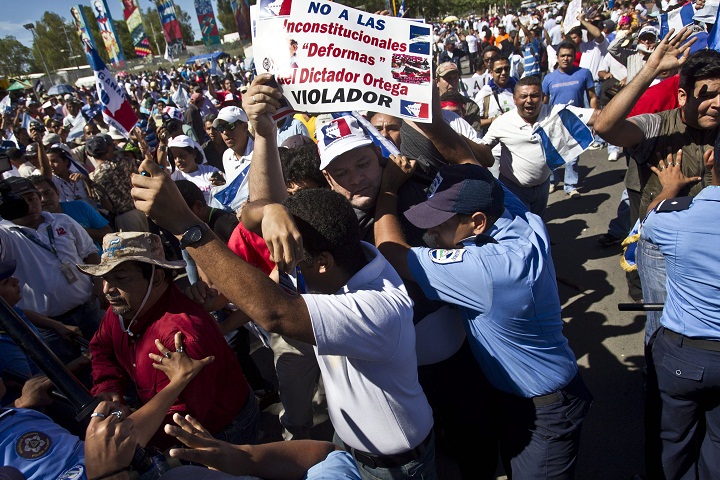MANAGUA, Nicaragua – A rare shootout between police and an armed group that left 10 people dead in northern Nicaragua has fueled suspicions that guerrillas are forming to challenge President Daniel Ortega’s government.

Nicaraguan officials have called Wednesday’s confrontation in the town of Ayapal near the Honduran border little more than an attempted grocery store robbery gone bad. Ortega Chief of Staff Ana Isabel Morales said Wednesday the assailants were “criminals.”
Others disputed the official account. One of the country’s main human rights groups, as well as a former Ortega ally and a Roman Catholic bishop reportedly in touch with a guerrilla band said the bloodshed represented evidence of long-rumoured insurgent activity.
“We can’t accept that there are 10 deaths in an attempted assault on a small town, it’s illogical,’ said Roberto Petray, director of the National Association for Human Rights. He said there were 12 members of an armed group under the leadership of a guerrilla who goes by the name of “El Flaco,” and they were “trying to take control of a police post, but it seems someone warned the police and they opened fire at the entrance to the village.”
Bishop Juan Abelardo Mata, from the province of Esteli, said he had tried to warn authorities that such violence could break out unless they addressed underlying problems of poverty and injustice afflicting poor Nicaraguans.
“There are people who are armed and unhappy with the government,” Abelardo said. “We have come warning of this without finding any receptive ear, and these are the results.”
The possibility of such nascent guerrilla activity awakens painful memories in Nicaragua, where many remember the U.S.-backed rebels, known as Contras, who throughout the 1980s fought the country’s Sandinista government, also led then by Ortega.
After nearly two decades out of power, Ortega returned to the presidency in 2007. Ortega is now seeking to change the country’s constitution to run for an unprecedented third term, adding to criticism that he has ruled autocratically.
The details of Wednesday’s clash in the remote area were sketchy, but rumours of guerrilla movements in the country have circulated for months. It’s unclear what the motives are of the suspected guerrillas: to topple Ortega’s government or simply force changes.
Petray said he had been following the activity of armed guerrillas in the country’s northern mountains, especially that of a group led by ex-Contra soldier Gerardo Gutierrez, known as “El Flaco” or “the Skinny One.” On July 18, Gutierrez engaged in a shootout with an army patrol in the town of Tamalaque, killing one soldier, according to army Col. Jose Dolores Hernandez Palacios.
Ana Maria Vigil, president of the Sandinista Renewal Movement, which split from the original Sandinistas in 1995, said she lamented the apparent return of guerrilla activity as a political tool.
“It’s a lie of the army and of the police to say they don’t exist or don’t have any political motivation,” Vigil said. “They are farmers who feel that their rights have been violated and have retaken up arms. There’s a return to thinking that the solution to problems is weapons.”
Vigil added that such public sentiment may open space for drug cartels to recruit local support as they use the country’s Caribbean coast to move cocaine and other narcotics up to the U.S.
The suspected guerrilla activity is taking place in the same northern and central parts of the country where Contra rebels had established their bases of operations in the 1980s. The new groups usually claim only 10 to 15 members, Petray said, but have been vocal.
Rebel leaders Jose Garmendia, known as “Yajob,” and Santo Joyas, alias “Black Pablo,” have spoken out in local media to denounce what they say are injustices such as the government’s lack of respect for the law, the failure to distribute enough ID cards to citizens and an absence of electoral transparency.
Both Garmendia and Joyas were killed over the past three years in still mysterious circumstances. The police and army have yet to clarify any involvement they may have had in the deaths.
Former Contra combatant Enrique Castillo said he leads a Miami-based group that sends medicine, clothes and other “humanitarian” aid to insurgent groups back in Nicaragua. He said he didn’t know who was behind Wednesday’s attack but believe IT WAS a local uprising.
“They were clashes that were spontaneous, that weren’t instigated by anybody,” Castillo said, “simply the injustice and the repression generated by Daniel Ortega.”



Comments